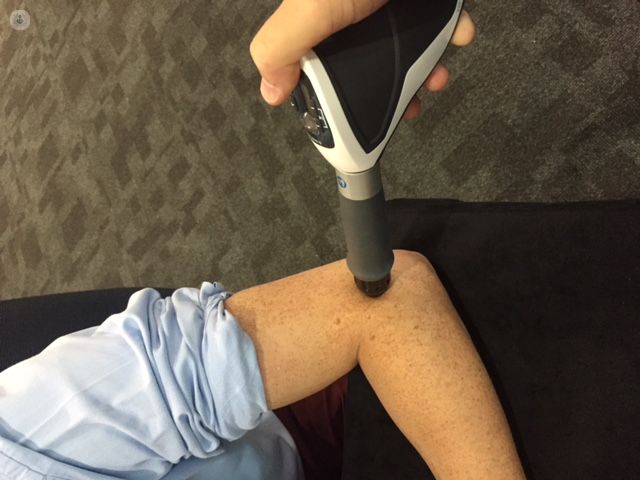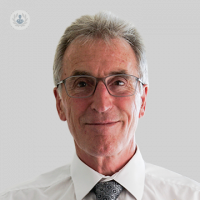Attending to tendinopathy: the latest treatment options for injured tendons
Autore:Tendons can become injured and inflamed through injury or overuse, and can result in quite a bit of pain. The good news is that treatment for tendinopathy is constantly improving, with a wide variety of treatment options now on offer. We interviewed sports medicine specialist Dr John Tanner to find out what your options are, with a particular look at shockwave therapy, which has seen some improvements in recent years.

What treatment options are available for tendinopathy?
The first line of therapy should involve (in order of importance):
- relative rest and modified activities
- support or braces to offload pressure on the tendon, depending on whether it is a lower or upper limb problem
- certain kinds of specific exercise programmes including eccentric and concentric exercise, and light stretching. The emphasis here is on progressive strengthening.
If these measure don’t work, we will consider a number of treatments:
- extracorporeal shockwave therapy (explained in more detail below)
- high volume image-guided injections to separate the sheath with blood vessels and pain nerve endings off the tendon
- other kinds of injections are sometimes offered, such as dextrose prolotherapy or PRP, but these are not so well proven.
We only consider corticosteroid injections in the case of inflammatory tenosynovitis, but this is not a common form of tendinopathy.
If these treatments don’t work, then we would consider more serious measures, such as complete rest in a cast or boot, or even surgery.
What is extracorporeal shockwave therapy?
Extracorporeal shockwave therapy is a treatment that has been around 30 years, developed in Germany from lithotripsy.
It involves the use of high energy, physical shockwaves focused into body tissues, initially to break up kidney stones, but now used for dealing with calcific deposits in tendons and to treat impaired repair in overuse or degenerative tendinopathy.
How can extracorporeal shockwave therapy treat tendinopathy?
We can focus very short pulses of high physical energy (like small blast waves) into specific sections of the tendon around a joint or at its insertion, which stimulates the healing process.
The healing process involves giving the fibrocytes or tenocytes, the small, often dormant cells, a ‘kick start’. They start doing their job, which is making more collagen and laying down fibres to renew the tissue.
The treatment also encourages the ingrowth of new blood vessels to carry oxygen to the area that needs to heal.
Is extracorporeal shockwave therapy painful?
Some focus shockwave therapy machines used to be, but the Piezo Wave production mechanism, which is based on producing energy by passing an electric current through a crystal, can produce high levels of focussed energy with very little pain.
It’s possible to alter the intensity of the shockwaves, ranging from mild sensation of discomfort to the pain zone, but it’s not necessary for the treatment to be painful in order to work.
How soon will patients notice improvements in their tendinopathy following extracorporeal shockwave therapy?
Some patients notice an immediate initial improvement, but more commonly it takes about 3 treatments a week or two apart before the benefit becomes gradually noticeable due to the renewed tissue in the tendon or muscle insertion. Overall improvement is expected within 8 weeks or so.


